Syn.: Chrysolarix amabilis (J. Nelson) E. H. Moore, Larix amabilis J. Nelson, Pseudolarix kaempferi (Lindl.) Gordon, Pseudolarix fortunei Mayr, Pseudolarix pourtetii Ferré
Family: Pinaceae Lindl.
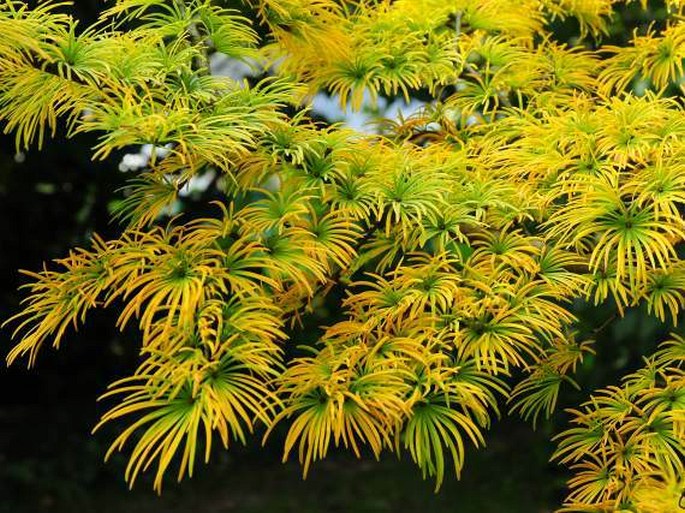
Distribution: Monotypic genus endemic to southeastern China around 30th parallel, approximately from the northern part of Chonqing Province in the west to East China Sea coast in Zhejiang Province in the east. The area of native distribution is difficult to discern due to the long history of cultivation and preference of species for low elevations, which are heavily changed by long-term human activities. Estimated native distribution range occupied the lower basin of the Chang Jiang (Yangtze) river.
Ecology: The species naturally forms an admixture of evergreen or deciduous mixed broad-leaved forests. Today it survives locally only in small tree groups or solitary trees in mostly deforested landscape. The indigenous range of elevation is reported to be between 100 and 1500 m asl.

Description: Deciduous conifer forming tall trees up to 40 m, with straight trunk to 3 m d.b.h. and irregularly whorled, horizontal or upward main branches, with drooping termination. Shoots of two forms: long shoots with leaves spreading in loose spiral, short shoots with leaves radially arranged in fan-like clusters. Long shoots reddish, glossy and glabrous. Needlelike leaves flat, 2–5.5(–7) cm long and 1.5–4 mm wide, sometimes slightly crescently bent, acute, pale or bluish green, turning orange yellow before shedding, with two indistinct greyish stomatal bands divided by prominent midvein. Male strobili in clusters by 10–25 at the end of short shoots. Seed cones solitary, erect on short shoots, ripening in autumn of the first year and soon disintegrating, 5–7.5 × 4–5 cm, with loosely rosette-like arranged, protruding, narrowly triangular, ca. 3 cm long seed scales; bracts ovate-lanceolate, attaining scarcely one third of the seed scales length. Seeds ovoid, ca. 7 mm long, with light yellow, narrowly triangular, ca. 2.5 cm long wing.
Threat and protection: The indigenous occurrences of the species heavily decline, thus it is evaluated as endangered. The species’ gene pool is partly preserved in trees cultivated for ornamental purpose.
Use: The species is popular as an ornamental tree attractive by its habit and autumn orange yellow foliage before its shedding. However, it is cultivated only rarely outside China in countries of temperate region. In China, it had been occasionally used as a wood source for furniture, boat building and construction of bridges.
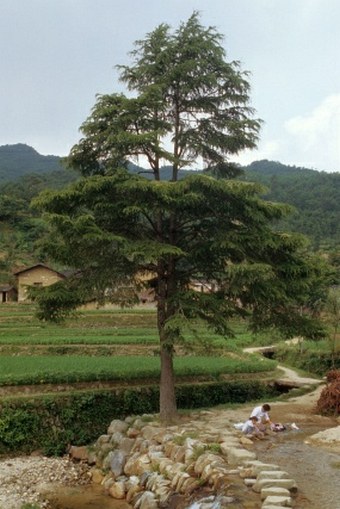
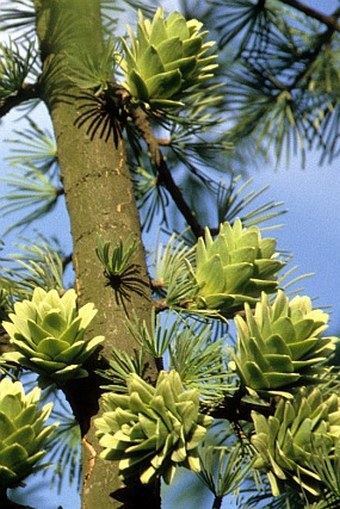
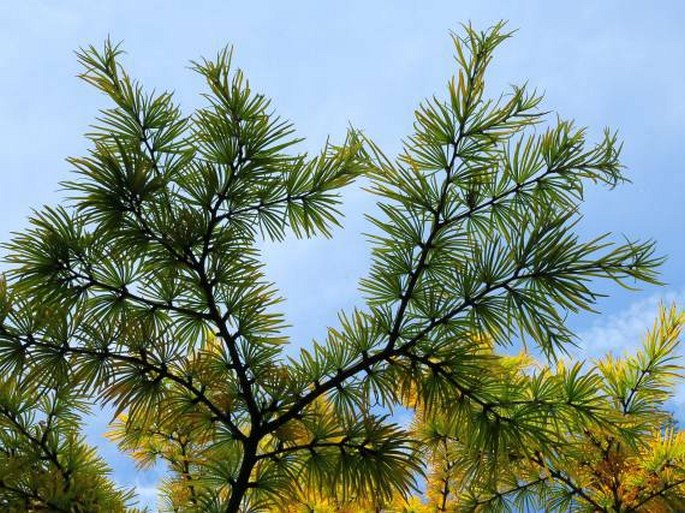
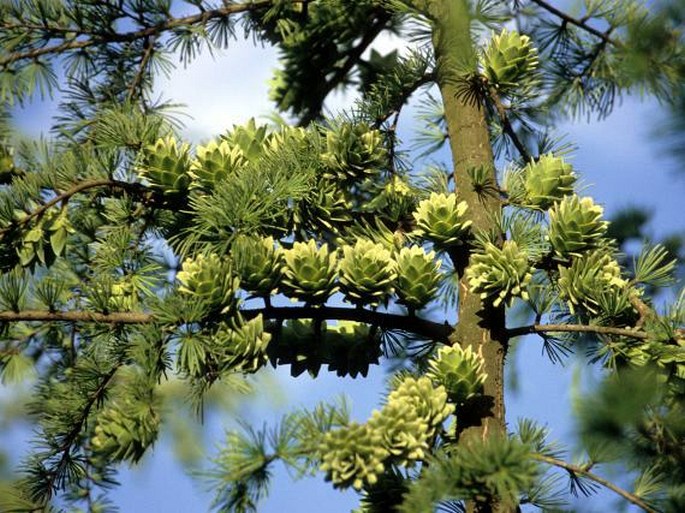
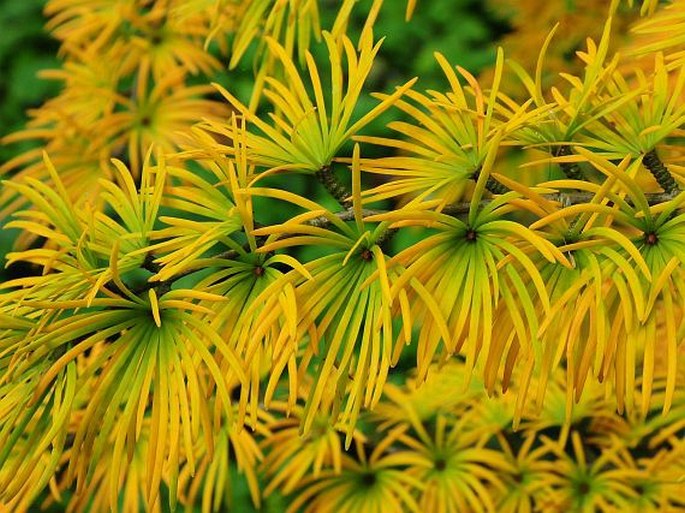
These images were taken in China, Anhui, southeastern foot of the Dabie Shan mountains in Yuexi County (July 16, 1995); China, Yunnan, Kunming, Heilongtan, Institute of Botany, Botanical Garden (fertile branches, May 22, 1992); Czech Republic, Bohemia, Kolín district, Doubravčice, private garden (September 29, 2011).


